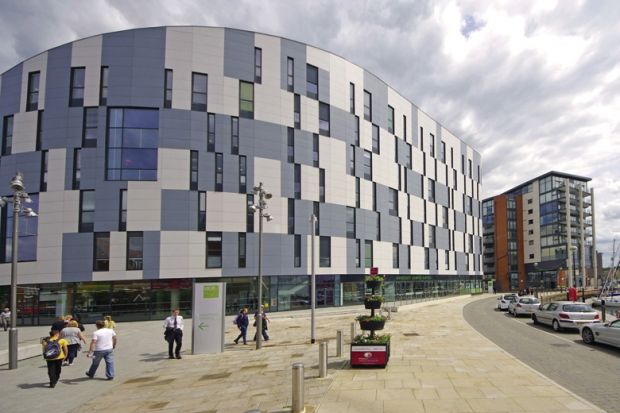The vice-chancellor of the newly independent University of Suffolk has spoken of the benefits of enduring a long process to university status while acknowledging the “turbulence” and “confusion” that it has created for students at the institution.
Richard Lister said that the process of Suffolk becoming a fully fledged university has given him and the institution “self-confidence” from “knowing that you’ve been through pretty clear scrutiny over a long period of time”.
Suffolk officially launched on 1 August, having begun its independence process in 2013. It was previously University Campus Suffolk, and until November 2015 its degrees were jointly validated by the University of East Anglia (UEA) and the University of Essex.
The UK government’s higher education White Paper stated that new universities should be able to apply for degree-awarding powers from day one of their operation.
But Mr Lister told Times Higher Education that the announcement, which came as the three-year independence process for Suffolk was drawing to a close, did not elicit frustration.
“I think it should be quite hard, and if we’re known as the last of the old universities, that’s fine,” he said.
“While I can see ways in which you could shorten the process, I think it’s absolutely right that the system is properly regulated and that there is real confidence that the people that are given independence and the power to award their own degrees have been through a proper level of scrutiny.”
However, he admitted that Suffolk’s journey did “create quite a bit of turbulence” and that changing the institution’s name to the University of Suffolk has “created a lot of confusion” among prospective students.
The institution’s overall satisfaction score in the National Student Survey also dropped from 86 per cent to 80 per cent over the past year, which Mr Lister attributed to students being “over-contacted” about upcoming changes to the institution.
“All the existing students in years one and two had to be contacted individually to decide which degree they wanted – they have the right to choose a UEA and Essex degree or a Suffolk degree, and there is no default option,” he said.
However, he said that universities that launched in the 1960s, such as Warwick and York, have provided a source of encouragement as they “had a very turbulent first decade and more” and “didn’t spring fully formed as top 20 universities”.
“What’s encouraging is that the blueprint of many of those Sixties universities that was laid down in the first few years still seems to run through the centres of those institutions,” he said.
He added that there would be “no violent lurches in strategy” for Suffolk and that a key priority would be to focus on serving the local community.
“All universities deliver good for the communities that they serve, but often it’s a by-product of their existence. I want to make it central to our existence,” he said.
The university currently has 4,500 full-time students, and Mr Lister said that he plans to increase this to 7,000 by 2020. He said that the proportion of students from the East Anglian region will fall as the institution attracts more students from other parts of the country and the world.
“We were actually excluded from many overseas markets by virtue of our relationship with UEA and Essex. Most international governments don’t get the concept of degrees from two places,” he said.
POSTSCRIPT:
Print headline: Clearing hurdles has given Suffolk ‘self-confidence’
Register to continue
Why register?
- Registration is free and only takes a moment
- Once registered, you can read 3 articles a month
- Sign up for our newsletter
Subscribe
Or subscribe for unlimited access to:
- Unlimited access to news, views, insights & reviews
- Digital editions
- Digital access to THE’s university and college rankings analysis
Already registered or a current subscriber? Login






